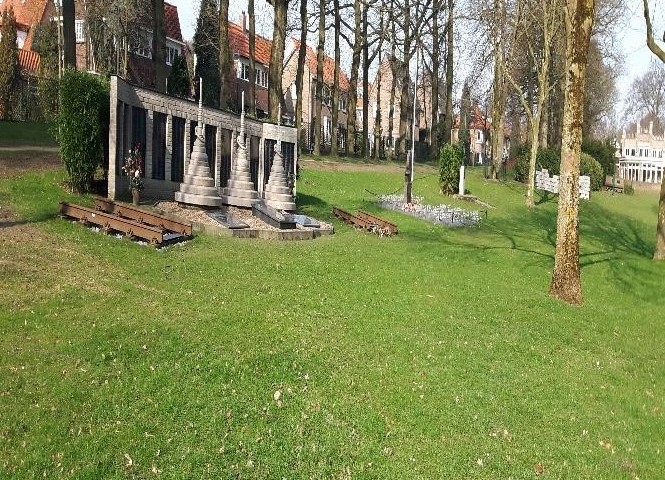Visit Museum Bronbeek in Arnhem


Take a keen interest in History, modern & ancient at museum Bronbeek
3 of my 5 strong family all take a keen interest in History, modern & ancient. Of those, 2, are passionate and knowledge about 20th Century Political History and WW2. I, however am somewhat unenthusiastic about visiting any more WW2 heritage sites that focus specifically on the British involvement; fascinating and heart wrenching though they are, I feel that I have just got a need to see such matters from a slightly different perspective some times. So, with that in mind, I proposed a visit to Museum Bronbeek. My eldest son & my husband both thought this a splendid idea and so off we went together for a visit.
Housing for disabled colonial military personnel
The museum as it is today, originally opened in 1863 as housing for disabled colonial military personnel on land bequeathed by King Willem 3rd, and is now regarded as a showcase of the Colonial efforts of the Dutch-India Army. The buildings are shared by Veterans and the museum. Donations from the King, the Ministry and many private individuals contribute to the wealth of cultural anthropology, natural, and military history that is beautifully chronologically displayed in the main building. Including, in the areas that were formerly the bowling alley and archery range, an impressive collection of weaponry and (ref. the Museum’s own literature) the World’s largest collection of canons & shot. The museum covers the time period 1815 – 1949.

Location and Transport
The museum address is 147 Velperweg, Arnhem. It is easily accessible from surrounding areas by private and public transport. The #1 Velp bus, stops right outside the front entrance and takes approximately 15 minutes from Arnhem Centraal Station. We travelled by car which was a faster option, less than 10 minutes from Arnhem town centre. There is well signposted, on-site and free, parking.
Costs and Incidentals
The museum entrance costs are inexpensive. Free up to age 6, then E3 up to age 19, and E6 up to age 65, and back down to E3 for over 65’s. Other discounted prices apply with various concession cards, there is a group rate, and a guide is available for E25. Open Tuesday through to and including, Sunday. I was informed that Sundays are the busiest days but we visited on Saturday and found it to be well frequented at that time. We felt that the entrance fee was good value for money. The museum also houses a small but pleasant café (drinks only) and a shop with a limited range of literature, clothing, ornaments and assorted decorative items. Also, there are free WC and cloakroom facilities.
The museum is fully wheelchair accessible, although we felt that the monuments and points of interest in the grounds would benefit from solid pathways for disabled visitors. A point I would also like to mention is that I don’t think the museum would hold any significant interest for the average youngest visitor – personally I think 12 plus at a minimum’ and even then only if interested in the specific subject matter.



Our impressions
We explored the estate grounds first, but it was a bitterly cold day so I must confess we didn’t cover all of them. They are however, very beautiful and include the buildings, many monuments, specimen trees, lakes, woods, games area and assorted birds and animals. The Goats and Donkeys were particularly charming . There are useful detailed layout maps, available in the museum reception foyer, of both the grounds and the museum galleries.
We chose to take a chronological route and that had us complete a circular trip through the building – the galleries are nicely presented and each has it’s own style of display. My son particularly enjoyed the auditory elements, my husband read each and every word on each and every display, and I personally reveled in the wide range of visuals from paintings to photographs to costumes, room sets, film projections, and artefact display cases with drawings, needlecraft, models, weaponry etc.
The galleries and exhibits are fully detailed in both Dutch and English and the staff are friendly and helpful. We had a leisurely stroll primarily throughout the main building itself, and overall we were there approximately 2 and a half hours, which was enough time, but on a more pleasant day weather wise, I would definitely plan on at least another hour spent outside. Overall, we all had a thoroughly enjoyable afternoon. As I said, I personally wouldn’t recommend for a family with very young children, but for school age children and upwards, I found a great deal of interest in small but not cramped surroundings – excellent perhaps for a school topic related visit and definitely for anyone with an interest in the role of the Dutch in Indonesia.
I have so many more photographs, but in all honesty, there are excellent photographs of the range of artefact on display, on each of the websites, and besides, I really think that it is so worth it to go along and make your own memories :).
FYI
The Museum has a Facebook page – https://www.facebook.com/MuseumBronbeek
And it’s own Website – http://museumbronbeek.nl
And more information can be sourced on https://www.defensie.nl/onderwerpen/bronbeek/inhoud/bezoeken and various other links all easily findable using your regular search engine.
As reviewed by Amanda Ann, February 2016.
The Bronbeek museum as it is today, originally opened in 1863 as housing for disabled colonial military personnel on land bequeathed by King Willem 3rd, and is now regarded as a showcase of the Colonial efforts of the Dutch-India Army.
